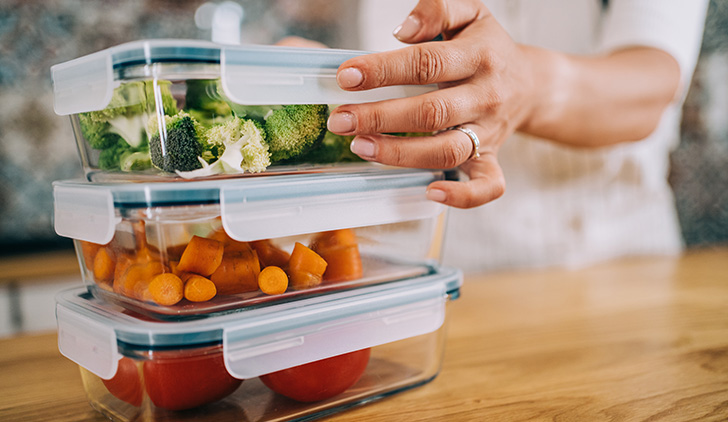
For National Food Safety Education Month, here are some tips for keeping your food safe for your friends and family to enjoy!
Do you know the “temperature danger zone” for the food you eat? If it’s outside of safe temperatures, bacteria with names like salmonella and E. coli can multiply faster than you can learn to spell them.
So how do you prevent your food from growing bacteria that could send you to the doctor? Taking precautions is the easiest way, and what better time to start than during National Food Safety Education Month?
Cold food
- Keep your refrigerator at 40 F or below. Cold temperatures slow the growth of harmful bacteria. If your refrigerator doesn’t have its own thermometer, invest in an appliance thermometer, place it inside and check the temperature often.
- Never leave food out of the refrigerator for more than 2 hours. And if the temperature outside is above 90 F, leave food out for less than an hour. If it’s your shopping day, start the clock when you put perishable food like meat, seafood, dairy, cut fruit and vegetables in your cart. Shopping for refrigerated and frozen items last can make keeping a safe temperature easy to achieve.
- Make sure there is room around your food in your refrigerator, so it chills properly. It’s never good to fill every nook and cranny in a fridge.
- Place food that needs to cool in the refrigerator or freezer in shallow pans, separate it into smaller or thinner portions and cover it loosely.
Frozen food
- Make sure your freezer is at or below 0 F. Some items, such as ice cream, may need a colder temperature.
- Avoid shortcuts like thawing chicken on the counter. To maintain food safety, thaw it safely in cold water, the refrigerator or microwave.
- If you’ve defrosted food in water or the microwave, cook it immediately.
Hot food
- Keep the temperature above 140 F. So, when setting up your next buffet for a family gathering, use slow cookers, chafing dishes, warming trays or other devices to keep your food hot.
- Refrigerate hot or warm food in shallow containers to chill it faster.
Other safety tips
There are many other ways to keep your kitchen safe, including:
- Keep raw proteins like meat and poultry separate from fruits, vegetables and other ready-to-eat items. Clean surfaces well if it came in contact with raw meat or poultry before preparing other foods.
- Wash your hands thoroughly before preparing foods and throughout the cooking process.
- Use a food thermometer to verify your meat, poultry and egg dishes are cooked to their proper internal temperatures.


